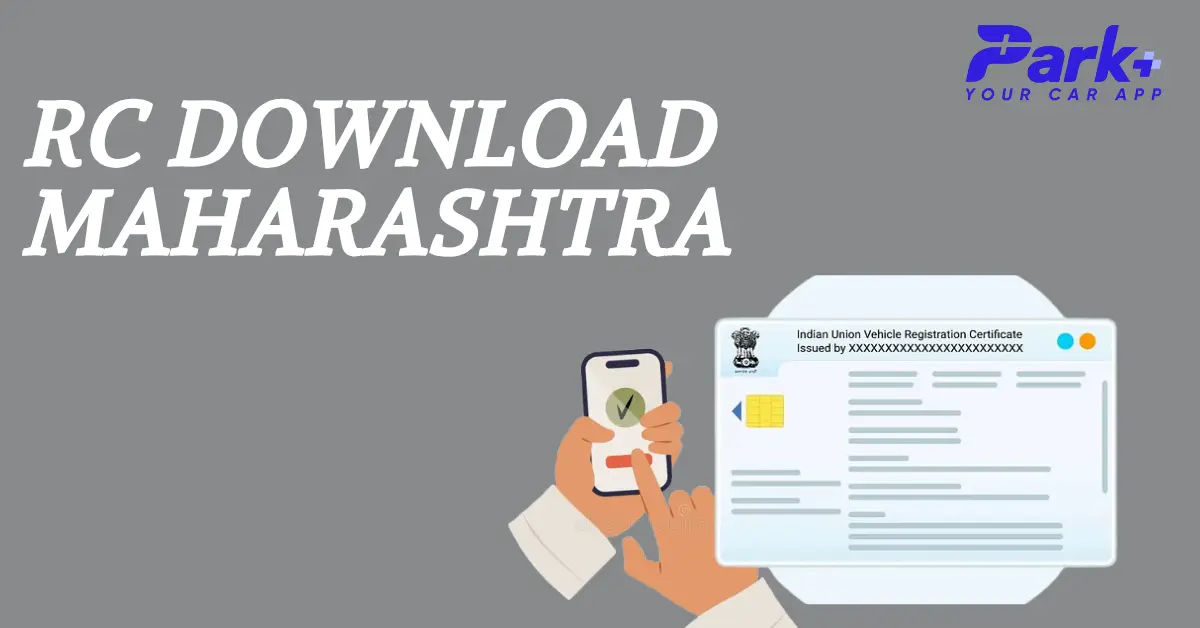Regional Transport Office (RTO) - Himachal Pradesh
Check Vehicle Details
Find Nearest RTO Office
Find RTO Office by State
Check RTO details state wise

RTO Telangana

RTO Andhra Pradesh

RTO Arunachal Pradesh

RTO Karnataka

RTO Madhya Pradesh

RTO Nagaland

RTO Mizoram

RTO West Bengal

RTO Tripura

RTO Maharashtra

RTO Kerala

RTO Meghalaya

RTO Punjab

RTO Haryana

RTO Himachal Pradesh

RTO Odisha

RTO Manipur

RTO Tamil Nadu

RTO Uttar Pradesh

RTO Gujarat

RTO Goa

RTO Jammu & Kashmir

RTO Jharkhand

RTO Sikkim

RTO Chhattisgarh

RTO Delhi

RTO Uttarakhand

RTO Bihar
Regional Transport Office (RTO) - Himachal Pradesh
The Regional Transport Office (RTO) is the sole authority that is accountable for the registration of all the vehicles in the Himachal Pradesh and all across the country. The Regional Transport Office (RTO) is in charge of licensing and tracking every automobile that travels on Indian roadways. Every state has multiple RTOs distributed across its length and width, so all these offices provide people with a variety of vehicle-related services. Vehicle registration is among the most significant services provided by RTOs.
You should register your motor vehicle as quickly as you purchase it. You can obtain a momentary registration number right away, but it should therefore be followed by a permanent registration around one month of purchase. Therefore, let us learn more about the RTO and its functions as well as needs.
You can check the RTO offices of Himachal Pradesh above.
What are the functions of RTO?
The RTO is responsible for ensuring environmental standards. It also includes RTO codes across all 50 states and the District of India.
Let us see some of the major functions of RTO.- Collecting Fees and Taxes:-
The vehicle tax collected by the government on various types of cars must be paid by every vehicle owner. Tax charges differ depending on the kind and capacity of the automobile. Motor Vehicle Tax is the name given to the retrieval of these levies (MV Tax). The RTO in that region is the sole governing body responsible for the collection of all the fees and taxes. In addition, the RTO retrieves the new International Multi-purpose Vehicle (IMV) payments. It also sanctions for situations involving governmental engagement.
- Road Safety:-
RTO must ensure that every individual motor vehicle need not exceed the speed limit and respect all traffic laws. In addition, they must follow basic road safety precautions. Furthermore, it guarantees that drivers follow the regulations outlined in the Motor Vehicles Act in order to minimize unnecessary hazards. Similarly, the RTO keeps a database of all registered automobiles that carry third-party insurance coverage. Therefore, if drivers are detected driving without insurance, then the driver's license or car registration may be canceled.
- Vehicle Registration:-
The RTO is in charge of the vehicle registration process. It also grants NOCs and transit licenses (No Objection Certificate). When transferring a vehicle's license from one RTO to the other in the same state, a No Objection Certificate is required. That would be to utilize a car purchased in one state to travel to another. When a vehicle is sold, the RTO is additionally responsible for updating the vehicle's license with the current buyer.
- The provision of DL:-
The RTO is in charge of issuing driving permits to drivers. As a result, the RTO administers driving exams and collects all relevant information about the drivers. It also verifies the vehicle's allowed class. RTOs offer Learner's Driving Licenses, Permanent Driving Licenses, Commercial Driving Licenses, and International Driving Permits when needed. It also handles license renewal and duplicate license issuance. It also determines if the automobile has or does not have gear. The registration type varies depending on whether the vehicle transports passengers or cargo.
- Vehicle Inspection:-
Its purpose is to inspect the functioning of automobiles on the roadway. As a result, they examine to see if the cars are registered, as well as any other essential paperwork. Also, whether or not they get an up-to-date and genuine No Pollution Certificate/NPC. They also check to determine if the car is in good working order and safe to drive on the streets.
- Environmental Regulations:-
The RTO determines whether the vehicles running on the streets can satisfy environmental complications by monitoring their pollutant levels. As a result, the RTO provides cars with a Pollution Under Control (PUC) Certificate. Additionally, it examines the vehicle and its associated equipment. For example, the smoke emitted by its components. It moreover involves the transformation of automobiles to CNG/LPG in order to minimize pollution.
Vehicle Registration with a Unique Number
Several individuals choose to acquire a one-of-a-kind license plate number. As a result, if you want a fancier registration number, anyone can contact the RTO. Additionally, you can utilize mParivahan's virtual smartphone apps. mParivahan is a smartphone application that provides access to every RTO-related detail. The National Informatics Centre originally designed the application for the convenience of common citizens.
Each region has its own RTO portal, which they may access. On this page, you may make an online demand by submitting documents such as car registration, DL, PUC, and etc. Anyone can use the mParivahan smartphone app or go to their nearest RTO. The department is operational throughout all state governments and Union territories, with multiple DTOs reporting to it. It strives to manage the growth of road transportation through revenue collection and the administration of permits issued under the Motor Vehicles Act. It is also administered by the Ministry of Road Transport and Highways, which is its primary ministry.
Why is it important to register your vehicle with the RTO?
Vehicle registration is required for a variety of reasons. For starters, it establishes the proprietorship of the automobile. According to RTO authorities, the vehicle's owner is the licensed owner on whose name the automobile is enrolled. If you wish to sell your automobile, you must have a registration certification. Owners don't possess the legal authority to trade or transfer possession of any vehicle unless they possess a legitimate registration certificate.
In addition, in the event of a catastrophe, police will be able to track down the owner and driver of the vehicle using the vehicle registration information. These assist individuals in identifying those concerned during an accident as well as for settling disputes in a civilized manner. The Transport Ministry of India maintains records on the frequency of vehicles running on the streets of every state and registering each vehicle assists them in compiling accurate data.
Importance of RTO
Registering your vehicle is not an option, but is regarded as a legal duty. Every vehicle in the country requires vehicle registration under the Motor Vehicles Act of 1988. This Act governs automobile registration. An individual is not permissible to drive a vehicle if they are not registered. The registration number of the vehicle must be exhibited on the vehicle always, according to the Act, and whoever fails to follow the rules, could be charged with a fine, and contempt against the law and order of the country.
What is the Vehicle registration process at RTO?
RTO's principal obligation is to preserve a vehicle database. This is performed when the car registration process is being performed. All new cars must be licensed with the appropriate RTO. Because that's where you obtain the vehicle's registration plate.
RTO manages vehicle registration tasks such as selling a car, providing No Objection Certificates when circumstances when vehicles require to be licensed from one state's RTO office to another and granting transport authorization.
The Motor Vehicle Act of 1998 requires the licensee to register the vehicle registration somewhere at the regional RTO office anywhere within the time frame specified. You have the option of having the dealer execute the authorization on behalf or doing it independently. You will obtain the vehicle's Registration Certificate (RC) after the registration procedure is completed.
The RC replica is a formal document that contains general information about the car, such as the manufacturer, purchase date, color, chassis number, number plate, owner's name, and so on. The RC copy must be kept in the vehicle at all times when driving.
Throughout most circumstances, the vehicle dealer handles the registration procedure. And this is how the whole RTO automobile registration works.
Step 1: The applying individual must complete the application form. It is very important to make sure that the very details entered in the form are correct and are not wrong. It is recommended to double-check the name and age, as well as address. After a thorough examination of all the details, and proper review, the person applying for the registration must return the filled form to the Regional Transportation Office.
Step 2: The are several documents that are required to be submitted along with the form that need to be kept in mind. Therefore, make sure to submit the required documentation as and when. Here's a rundown of all the documents that are required to be submitted with the application: Form 20, car sales certificate, receipts, vehicle insurance contract, applicant's pictures, and identification evidence
Step 3: After you have successfully filled the form and submitted all the related documents. The authenticity of all the details and the documents are checked. An investigating officer is responsible for reviewing the details of the form and all the supporting documentation. After the details are approved by the officer, and if they are correct and authentic. You will be given a vehicle registration number as well as a receipt after your request has been accepted.
Step 4: Within 30 days, you will obtain the certification mark that you must place on the vehicle's license plate and request permission from the authorities concerned. This registration mark is proof that your vehicle has been registered by the government, under the RTO and is allowed to travel on the roads.
There are two types of registration that take place for any vehicle. Therefore, let us see what are two types:- Temporary RTO Registration Number:- As an owner of a vehicle, you receive a registration number at the time of purchase. The vendor or dealer assigns you under a momentary number to indicate that your car has not yet been finalized. The registration number is only viable for a certain time, and then it's important to obtain a permanent registration number well within the time frame.
- Permanent vehicle registration number:- When you enroll a new automobile with the Ministry of Road Transport & Highways via a regional RTO, you would be assigned a permanent registration number. You will not be able to update it once it has been allotted under any situation. You must re-register the vehicle when you are moving from one state to another.
How to Transfer RC from one state to another?
It is understood that when you are moving from one state to another you might have to re-register your vehicle and transfer your RC from one state to another. This is only done, when you are moving for a longer period of time, or you are permanently shifting. Therefore, let us see what are the steps to transfer your RC to a different State.
Step 1: The first step that you have to go through to transfer the RC of your vehicle is to un-register the car at the RTO with which the vehicle is presently registered. After you initiate the un-register process, you will receive a No Objection Certificate (NOC) after its approval through the relevant RTO or current region. This NOC is very important to state that your vehicle is not registered in two states at the same time.
Step 2: After you have received the NOC, then you would have to submit the No Objection Certificate towards the current state's RTO in accordance with the jurisdiction. This will make you eligible to get your vehicle registered in the new state.
Step 3: After you have successfully submitted the NOC you will receive the form to apply for the new RC number. You have to full all the requirements required by the state's RTO, such as paying the necessary road tax. And go through the standard procedure of registering your vehicle which was discussed above. The following process involves, filling the form, and submitting the relevant documents.
Step 4: Once all of the processes are fulfilled, you will be given the vehicle's official registration number. This registration you will receive will be according to the current state.
Procedures related to RC Transfer
Because the NOC has an expiration date, you must fulfill the re-registration protocol before your NOC becomes worthless. If you purchased your automobile or bike through the help of a bank or governmental organization, you would also require a letter of authorization (NOC) from the lender or government agency.
What is One India, One Vehicle Registration Number?
Previously it was stated by the government authorities and different RTOs, that when you are moving from one state to another state, and if you wish to spend more than a year in the new state, then the RC of the vehicle has to be transferred to the new state. This caused a lot of problems for people who moved from one state to another due to their official work. They often had to re-register their vehicle after every state change. It was very inconvenient and a cause for many problems.
Important factors to note about the BH Series
The federal government took a major step toward eliminating the procedure of altering a vehicle's registration number when it moves from one jurisdiction to another. The Union Ministry of Road Transport and Highways created a new sequence of registration numbers for this purpose.
An individual is only permitted to maintain their vehicle for approximately at least 12 months in whatsoever state except the one in which it is registered under current legislation. Following 12 months, a new registration number must be taken from the state-registering body.
Re-registering your vehicle requires getting a No Objection Certificate (NOC) again from the state, assigning a new registration stamp after paying the new state's vehicle tax on either a rotation basis and applying for a proportionate reimbursement of the original state's taxes. The method of getting reimbursement from the previous state is time-consuming and differs in each state.
The Ministry issued a special registration mark for the latest automobiles, the Bharat series (BH-series). When the proprietor of an automobile having this registration mark moves from one state to another, the automobile does not necessitate a new registration number to be assigned.
The Format which was launched for the new BH-series number was YY BH #### XX. In sequence, the YY stands for the year in which the vehicle was first registered. BH is the unique code for all the vehicles launched for the Bharat Series. #### will the four random number sequence, whereas XX would stand for the two unique alphabet combinations.
Defence personnel, workers of the federal as well as state governments, state and central general public undertakings, including private sector organizations with branches in four or even more states and the union territories, would be entitled to register their vehicles underneath the BH-series.
It said that the MV Tax imposed by States and Union Territories just at registration process would be 8% on BH-series non-transport automobiles having a value of less than ten lakh rupees, with a 2% surcharge for diesel cars and a 2% reduction for electric mobility.
The Motor Vehicle Tax would be computed electronically with the site on the foundation of the listed price, with the exception of the Goods and Services Tax.
Vehicles registered under the BH-series would be subject to a two and perhaps multiple motorised vehicle tax. The scheme's goal is to make unrestricted migration of personal automobiles among states and in between Union Territories in the nation easier when people relocate to a new state and UTs. The motor vehicle tax will be imposed yearly once the fourteenth-year tenure has elapsed, and it will be 50 percent of what was previously paid.
Simplifying the benefits of the BH Series
To understand in a simple way, there are several vehicles of the BH series registration number. Let us see some of the prominent advantages of the new series. - When owners relocate to a different state, automobiles with the new series "BH," which represents "Bharat," would not need to be registered again - A two-year or multiple-of-two car tax would be demanded of car owners - There would be no requirement to often visit RTOs because the full procedure will be performed online
BH Series compliant road tax
The government has established the following vehicle tax with the new "BH" series rule: - For automobiles priced up to Rs 10 lakh, there is an 8% road tax - For automobiles priced within Rs 10 and Rs 20 lakh, there is a 10% tax - For automobiles costing more than Rs 20 lakh, there is a 12% tax - Diesel cars will be charged an additional 2% surcharge - Electric cars will be taxed at a lower rate of 2%
How to Register Vehicle Offline & Online in Himachal Pradesh
The registration of vehicles is crucial to confirm the legality of driving and add legitimacy to the whole operation on the road. Here is a step-by-step procedure for vehicle registration online and offline:
Visit the nearest Regional Transport Office
Visit the nearest Regional Transport Office (RTO) or a designated vehicle registration centre
Collect application form
Collect the required application form for vehicle registration
Fill out all necessary information
Fill out the application form accurately with all necessary information, such as vehicle number, model, owner's details, etc
Attach documents
Attach the supporting documents, such as proof of identity, proof of address, vehicle invoice, insurance certificate, pollution under control (PUC) certificate, and chassis and engine number
Submit application to the designated authority
Submit the completed application form with supporting documents to the designated authority
Pay application fees
Pay the applicable registration fees and taxes at the designated counter
Authority will issue a RC
Upon verification of the documents and payment, the authority will issue a registration number and a registration certificate (RC) for your vehicle
Put registration number plate
Use the registration number plate on your vehicle as per the regulations given by the authority
Visit the Online Website
Visit the official website of the Ministry of Road Transport and Highways (MoRTH) or the respective state transport department's website.
Go to Online Vehicle Registration Section
Find and go to the Vehicle Ownership Section
Register/Log in
Register for an account or log in with your existing credentials.
Fill out the online application form
Fill out the online application form for vehicle registration with accurate details.
Upload scanned copies
Upload the scanned copies of the required documents, including proof of identity, proof of address, vehicle invoice, insurance certificate, PUC certificate, and chassis and engine number.
Pay Applicable Fees
Pay the applicable registration fees and taxes at the designated counter.
Submit application and documents
Make the online payment for registration fees and taxes using the available payment options.
Authority will issue a RC
After verification of the submitted documents and payment, the authority will issue a registration number and a digital registration certificate (RC) for your vehicle
Get digital RC
Download and print the digital RC from the online portal
Put registration number plate
Use the registration number plate on your vehicle as per the regulations specified by the authority
Why should you Prefer Park+ to Check RTO Details?






How to Transfer Vehicle Ownership Online and Offline in Himachal Pradesh
Transferring vehicle ownership is a crucial process that involves legally transferring the rights and responsibilities of owning a vehicle from one individual or entity to another. Here is a step-by-step procedure for transferring vehicle ownership online and offline:
Visit the nearest Regional Transport Office
Visit the nearest Regional Transport Office (RTO) or designated vehicle registration centre to get the vehicle ownership transfer application
Fill all necessary details
Fill out the application form with all necessary details, including the seller's and buyer's information, vehicle details, and transferor's consent
Sign the application
Both the seller (transferor) and the buyer (transferee) must sign the application form along with two witnesses
Attach the supporting documents
1. Attach the supporting documents required for ownership transfer, such as: 1. Original registration certificate (RC) of the vehicle. 2. Proof of identity and address of both the seller and the buyer. 3. Sale agreement or deed of transfer (if applicable). 4. No Objection Certificate (NOC) from the financier (if the vehicle is under a loan). 5. Valid insurance certificate. 6. Pollution under control (PUC) certificate.
Submit application to the designated authority
Submit the completed application form with supporting documents to the designated authority at the RTO or vehicle registration centre.
Transfer fee and road tax
Pay the applicable transfer fee and road tax (if any) at the designated counter
Authority will issue a new RC
After verifying the documents and payment, the authority will update the ownership details in the vehicle's registration certificate (RC) and issue a new RC in the buyer's name
Receive updated RC
The buyer will receive the updated RC, and the seller will retain a copy of the sale agreement or deed of transfer for their records
Visit the Official Website
Visit the official website of the Ministry of Road Transport and Highways (MoRTH) or the respective state transport department's
Got to Vehicle Ownership Transfer
Open the online vehicle ownership transfer portal
Register/Log in
Register for an account or log in with your existing credentials.
Fill Out the Online Application Form
Fill out the online application form for vehicle ownership transfer with accurate details, including seller's and buyer's information, vehicle details, and transferor's consent.
Upload Scanned Copies
1. Original registration certificate (RC) of the vehicle. 2. Proof of identity and address of both the seller and the buyer. 3. Sale agreement or deed of transfer (if applicable). 4. No Objection Certificate (NOC) from the financier (if the vehicle is under a loan). 5. Valid insurance certificate. 6. Pollution under control (PUC) certificate.
Transfer Fee and Road Tax
Make the online payment for the transfer fee and road tax (if any) using the available payment options.
Submit Application & Documents
Once the payment is processed, submit the application form and documents through the online portal.
Receive Updated RC
After verification of the submitted documents and payment, the authority will update the ownership details in the vehicle's registration certificate (RC) electronically.
Authority will issue a new RC
After verification of the submitted documents and payment, the authority will update the ownership details in the vehicle's registration certificate (RC) electronically
Receive confirmation
Both the seller and the buyer will receive a confirmation of the ownership transfer through the online portal
Get Digital RC
The buyer can download and print the updated RC from the online portal for their records
Common fees structure
Driving License
| Documents | Prices |
|---|---|
| Application Fee | ₹200 to ₹500 (varies by state) |
| Learner's License Test Fee | ₹30 to ₹150 (varies by state) |
| Driving Test Fee | ₹50 to ₹300 (varies by state) |
| Renewal Fee: | ₹200 to ₹500 (varies by state) |
| Duplicate DL Fee | ₹200 to ₹400 (varies by state) |
Vehicle Registration Certificate (RC):
| Documents | Prices |
|---|---|
| Registration Fee | ₹600 to ₹1,500 (varies by state) |
| Smart Card Fee | ₹200 to ₹500 (varies by state) |
| Hypothecation/Endorsement Fee | ₹100 to ₹300 (varies by state) |
| Transfer of Ownership Fee | ₹300 to ₹1,000 (varies by state) |
| Duplicate RC Fee | ₹200 to ₹400 (varies by state) |
Fitness Certificate:
| Documents | Prices |
|---|---|
| Fitness Test Fee | ₹200 to ₹600 (varies by vehicle type) |
| Fitness Certificate Fee | ₹300 to ₹800 (varies by vehicle type) |
Permit Fees:
| Documents | Prices |
|---|---|
| Temporary Permit | ₹50 to ₹200 (varies by state) |
| National Permit | ₹500 to ₹2,000 (varies by state and vehicle type) |
| State Permit | ₹200 to ₹800 (varies by state and vehicle type) |
Road Tax:
| Documents | Prices |
|---|---|
| Entry Tax | ₹200 to ₹1,000 (varies by state and vehicle type) |
| Road Tax | 4% to 15% of the vehicle's ex-showroom price (varies by state and vehicle type) |
| Green Tax | ₹500 to ₹2,000 (varies by state and vehicle type) |
Explore



What Services does RTO Provide?
The Regional Transport Office (RTO) provides a range of services related to vehicle registration, driver licensing, and enforcement of transportation laws. Some of the key services offered by RTOs include:
1
RTO facilitate the registration of new vehicles and the renewal of registration for existing vehicles.
2
Provide driver's licenses and other permits needed to drive various types of vehicles.
3
Vehicle Fitness Certification to assess vehicle roadworthiness and safety standards, issuing fitness certificates accordingly.
4
Issuance of Permits for commercial vehicles such as taxis, buses, trucks, and auto-rickshaws, allowing them to operate legally.
5
Collect Road Taxes and other fees related to vehicle registration and licensing.
6
Enforcement of Traffic Rules, such as monitoring vehicle emissions and conducting vehicle inspections.
7
RTOs maintain databases of registered vehicles, drivers, and other relevant information to ensure transparency and accountability in transportation management.


